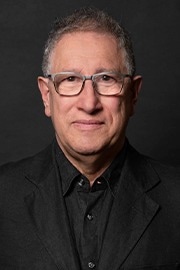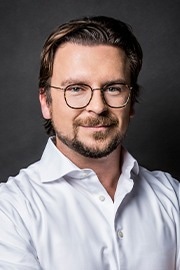 Interview conducted by Lexie CornerApr 22 2024
Interview conducted by Lexie CornerApr 22 2024In a new feature on AZoQuantum, Terra Quantum introduces the groundbreaking "flowermon" qubit. Dr. Valerii Vinokur and Dr. Florian Neukart discuss this innovative leap, poised to redefine quantum computing with unparalleled stability and efficiency.
Can you please introduce yourself and your role at Terra Quantum?
Valerii Vinokur:
As the Chief Technology Officer US at Terra Quantum, I spearhead many of our company's scientific and technical advancements, laying the groundwork for breakthroughs in quantum technology.
My primary focus is pioneering the development of robust quantum hardware and driving innovation that will serve as the cornerstone for our next-generation quantum solutions.
Florian Neukart:
As the Chief Product Officer at Terra Quantum, my role encompasses the oversight of product development, the crafting of strategic product visions, and the orchestration of product marketing efforts.
In collaboration with our dedicated teams, I am committed to converting our foundational work into innovative products that resonate with our customers. These products are not only desirable and secure but are also designed with scalability and usability at their core.
Terra Quantum has recently announced the discovery of the "flowermon" qubit, marking a significant advancement in quantum computing. Can you describe the traditional methods used in qubit design, and what specific limitations prompted your team to explore this new approach?

Image Credit: Amin Van/Shutterstock.com
Valerii Vinokur:
This discovery of a new kind of qubit, which we called the “flowermon,” is a theoretical prediction. The motivation for our work was that the existing superconducting qubits are made of aluminum (Google) or a mix of aluminum and niobium (IBM).
As a result, they operate at extremely low temperatures, not exceeding 40 millikelvins (mK), which is hundreds of degrees below zero. This extreme limitation motivated our research to discover new qubits that can function at higher temperatures.
Florian Neukart:
Traditional qubit designs often deal with short coherence times due to environmental noise. To overcome these, our team developed the “flowermon “qubit, which utilizes twisted cuprate van der Waals heterostructures, seeking inherent noise protection and longer coherence times.
Could you explain the unique configuration of the “flowermon” qubit and its distinctive properties, such as its ability to suppress environmental noise and extend coherence times?
Valerii Vinokur:
The “flowermon” comprises two flakes of atomically thin Bi2212 crystals. These compounds have the d-wave spectrum, which has zero nodes. If these nodes at the opposite flakes coincide in space, the quasiparticles tunnel across the junction, breaking the function of the Josephson junction by introducing noise and dissipation, which disrupt coherence.
The relative twist of the flakes over approximately 45 degrees suppresses the tunneling, which restores the Josephson junction behavior in two-pair tunneling. This minimizes the detrimental effects of tunneling while improving stability and coherence times. Moreover, these twisted heterostructures acquire a special spectrum, as calculated in our paper, which decreases the effects of dephasing and environmental noise.
Florian Neukart:
The "flowermon” qubit is configured using a twisted van der Waals heterostructure that suppresses single Cooper pair tunneling at certain twist angles, favoring two-pair tunneling. This property is beneficial for reducing charge-noise-induced relaxation and extending coherence times.
How do you anticipate that the significant enhancement of coherence times will revolutionize the stability of quantum processors?
Valerii Vinokur:
The source of the decoherence is the quasiparticle tunneling across the Josephson junction, which is the core of the superconducting qubit and the environmental noise.
In the “flowermon” qubit designed from the high-temperature superconductor, the tunneling and noise effects are suppressed over orders of magnitude, which results in the corresponding increase of the coherence time.
The increase of the coherence time implies the corresponding increase in the continuous qubit functioning—that is, the stability time of quantum processors by orders of magnitude—which will revolutionize the properties of quantum computers.
Florian Neukart:
The enhancement of coherence times implies that quantum processors can maintain quantum states longer, allowing for more complex and error-resistant computations, moving closer to practical quantum computing.
Traditional qubit designs often require highly controlled fabrication and tuning processes. How does the "flowermon" qubit differ from these traditional approaches?
Florian Neukart:
Unlike traditional qubits that require precise fabrication and environmental controls, the "flowermon" qubit uses a simpler design that is less sensitive to these factors, simplifying the manufacturing process.
How will the simplification of fabrication and tuning improve the scalability of quantum devices?
Florian Neukart:
Simplified fabrication and tuning processes will lead to easier production and integration of quantum devices, hence improving the scalability of quantum computing systems.
What are the primary applications of the "flowermon" qubit?
Valerii Vinokur:
Currently, the applications are precisely the same as those of other qubits. However, the increased stability time can bring new use cases. This is one of the directions of our research.
Florian Neukart:
The primary applications for the “flowermon” qubit would be creating more stable quantum processors and enabling complex quantum algorithms, which are essential steps toward practical quantum computing.
Following the publication of these findings, are there any developments you are particularly excited about pursuing?
Valerii Vinokur:
Our publication is a theory of the “flowermon.” We are going to fabricate them and use them as a platform for novel quantum computers with as-yet-unforeseen capabilities. Exploring their potential is extremely exciting for us.
About Valerii Vinokur and Florian Neukart
 Valerii Vinokur, Ph.D.
Valerii Vinokur, Ph.D.
Valerii Vinokur is Terra Quantum’s Chief Technology Officer for the United States. Based in Chicago, he oversees the project portfolio with a particular focus on hardware components while applying his deep and long-term world-class experience to expanding the intellectual property and patent portfolio.
He graduated from the Moscow Institute of Steel and Alloys in 1972 with a BSc in Physics of Metals and moved to the Institute of Solid State Physics, where he received a Ph.D. in Physics in 1979. Subsequently, Vinokur joined the U.S. Department of Energy’s Argonne National Laboratory, where his research especially focused on understanding topological quantum matter and superconductivity.
For more than three decades, he dedicated his efforts as a senior scientist to the US research institution before joining Terra Quantum in 2019.
His remarkable scientific achievements have been acknowledged numerous times by the international science and research community, most recently with the 2020 Fritz London Memorial Prize in recognition of his outstanding contributions to the field of condensed matter and theoretical physics.
Florian Neukart, Ph.D.
Florian is Terra Quantum’s chief product officer. He has built a reputation as a high-tech leader and practitioner, and advisor in innovation and future tech.
He is on the Board of Trustees of the International Foundation of Artificial Intelligence and Quantum Computing, a special advisor to the Quantum Strategy Institute, on the Board of Advisors of the KI Park, a co-author of Germany’s National Roadmap for Quantum Computing, on the Advisory Board of Quantum. Tech, and was a member of the World Economic Forum’s Future Council on Quantum Computing.
Before joining Terra Quantum AG in 2021, he worked at Volkswagen Group in various positions for 11 years, assuming responsibility as Director for the Group’s innovation labs in Munich and San Francisco.
Florian studied computer science, physics, and information technology, holding Master’s degrees and diplomas in these fields as well as a Ph.D. in computer science focusing on the intersection of artificial intelligence and quantum computing.
He pursues academic research and teaching, working as an assistant professor at the Leiden Institute of Advanced Computer Science, teaching quantum computing.
Where can readers find out more?
Disclaimer: The views expressed here are those of the interviewee and do not necessarily represent the views of AZoM.com Limited (T/A) AZoNetwork, the owner and operator of this website. This disclaimer forms part of the Terms and Conditions of use of this website.